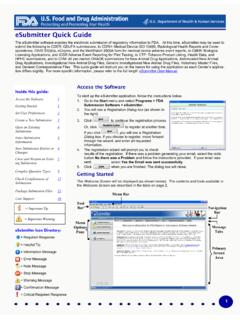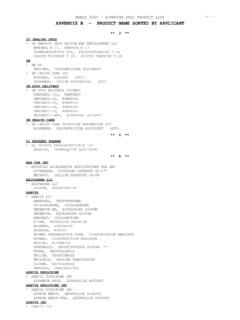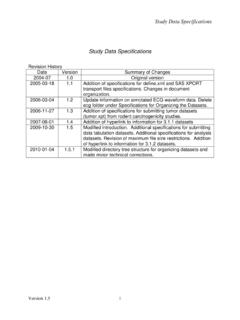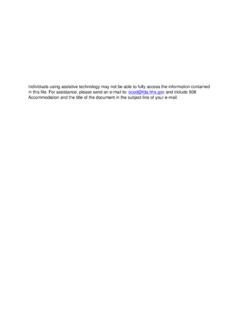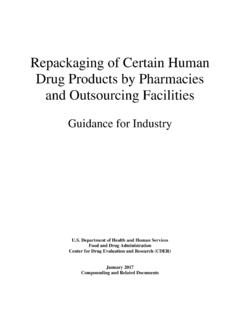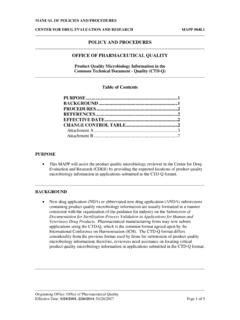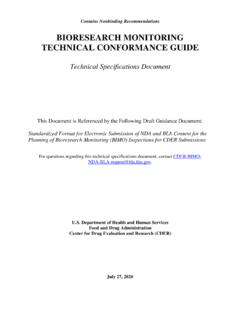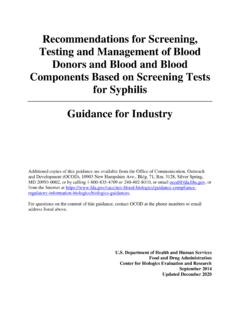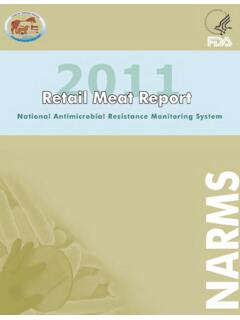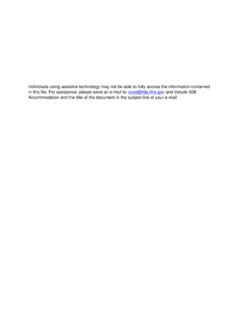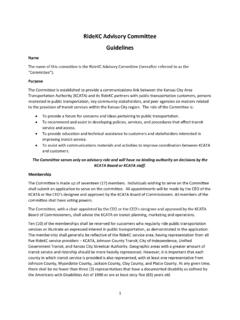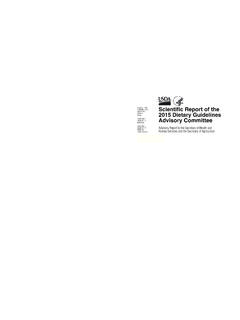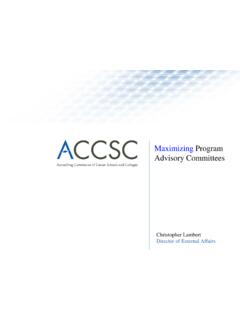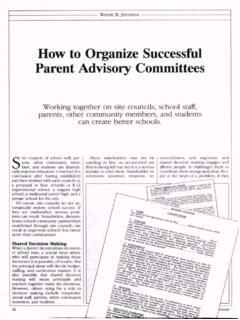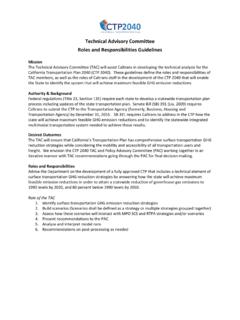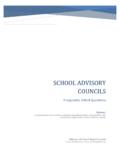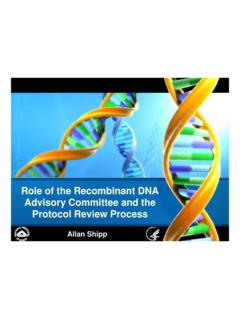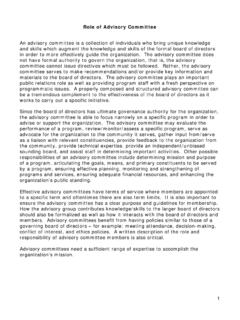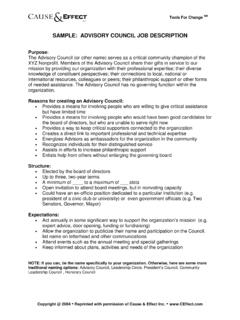Transcription of Guidance for FDA Advisory Committee Members and FDA Staff
1 Contains Nonbinding Recommendations Guidance for FDA Advisory Committee Members and FDA Staff : Voting Procedures for Advisory Committee Meetings For questions regarding this document, please contact the Advisory Committee Oversight and Management Staff at 301-827-1220 Department of Health and Human Services Food and Drug Administration August 2008 1 Contains Nonbinding Recommendations Guidance for FDA Advisory Committee Members and FDA Staff : Voting Procedures for Advisory Committee Meetings Additional copies are available from: Office of Consumer and Constituent Relations Office of the Commissioner Food and Drug Administration 5600 Fishers Lane Rockville, MD 20857 (Phone 301-827-4573) http://www/fda/gov/ohrms/dockets Department of Health and Human Services Food and Drug Administration August 2008 2 Contains Nonbinding Recommendations Guidance FOR FDA Advisory Committee Members AND FDA Staff Voting Procedures for Advisory Committee Meetings Introduction This Guidance represents the Food and Drug Administration s (FDA s) current thinking on this topic.
2 It does not create or confer any rights on any person and does not operate to bind FDA or the public. You can use an alternative approach if it satisfies the requirements of the applicable statutes and regulations. If you want to discuss an alternative approach, contact the appropriate FDA Staff . If you cannot identify the appropriate Staff , call the appropriate number listed on the title page of this Guidance . I. Introduction This Guidance provides Guidance on Advisory Committee voting procedures and is intended for use by FDA Advisory Committee Members and FDA Staff involved with Advisory Committee matters. This document recommends uniform procedures that can be used for the voting process when votes are taken during Advisory Committee meetings.
3 This document does not recommend when votes should be taken. FDA s Guidance documents, including this Guidance , do not establish legally enforceable responsibilities. Instead, guidances describe the Agency s current thinking on a topic and should be viewed only as recommendations, unless specific regulatory or statutory requirements are cited. The use of the word should in Agency guidances means that something is suggested or recommended, but not required. II. Background FDA's Advisory committees provide independent expert advice to the agency on a range of complex scientific, technical, and policy issues, including questions related to the development and evaluation of products regulated by FDA.
4 Advisory committees are a valuable resource to FDA, and they make an important contribution to the agency s decision-making processes. Although Advisory committees provide recommendations to FDA, FDA makes the final decisions. 3 Contains Nonbinding Recommendations Advisory committees typically communicate advice or recommendations to the agency in two ways. First, FDA learns from the discussion and exchange that occurs among Advisory Committee Members , and from individual recommendations and suggestions made during the discussion of any Advisory Committee meeting. Second, Advisory committees often vote on a question or series of questions posed to the Committee during a Committee meeting.
5 As the agency makes its final decision, FDA seriously considers the recommendations made by Advisory committees , including the Advisory Committee deliberations and voting. This document provides Guidance on the procedures used for voting. There are some Advisory Committee meetings at which votes are not taken. For example, votes are typically not taken at meetings to discuss the development of a clinical trial design or the development of a Guidance document. At other Advisory Committee meetings, Members cast a formal vote on issues related to the approvability of a product submission. In others, different questions may be posed to a Committee for a formal vote.
6 Votes can be an effective means of communicating with FDA because they provide feedback on discrete questions. These questions are generally scientific in nature and can involve a range of subjects, including evaluation of post-market safety data or pre-market assessment of a product's risk/benefit profile. Since all Members vote on the same question, the results help FDA gauge a Committee s collective view on complex, multi-faceted issues. FDA recognizes that many of the questions voted on by Advisory Committee Members are complex and that the discussion that accompanies the voting is The discussion, together with the votes, helps inform the agency s own deliberations on scientific and regulatory matters.
7 Accordingly, FDA recommends adopting uniform voting procedures to help maximize the integrity and meaning of voting results. In developing these recommendations, FDA is mindful of the legal requirements of the Federal Advisory Committee Act (FACA), other relevant statutes ( , the Federal Food, Drug, and Cosmetic Act), regulations ( , 21 CFR Part 14), Guidance , policies, and the goals of FDA s Advisory Committee program. Transparency and public participation are critical features of the Advisory Committee process. The use of secret ballots, long a hallmark of the American electoral experience, generally is not appropriate in the Advisory Committee context because the expert opinion of each member should be clearly understood and identified with that expert.
8 Nevertheless, even with public balloting, the voting process can be managed to help maximize the integrity and utility of the outcome. There has been much discussion inside and outside FDA regarding sequential versus simultaneous voting. Some have expressed concern that sequential voting, in which Members cast public votes in turn, has the potential to compromise the integrity of the result. 4 Contains Nonbinding Recommendations For example, scholars and social scientists have studied the risk of momentum" in sequential voting, exploring whether some sequential voters may be influenced, perhaps even subconsciously, by the votes that precede theirs, especially if those votes are nearly identical or signal a clear trend1.
9 This potential risk may be aggravated in the Advisory Committee setting, where votes are often conducted in full view of a passionate public and participatory audience. In the case of sequential voting, there is also a potential risk that comments made by a Committee member or a designated federal officer (DFO) during the vote could inappropriately affect the deliberations of those who have not yet voted. Another potential risk is that comments could alter the meaning (or interpretation) of the question at issue in such a way as to cast doubt on whether all the Members voted on the identical question. III. Policy Accordingly, to help maximize the integrity, consistency, and utility of Advisory Committee voting results, FDA recommends that the voting process include the following procedures: The Chair and DFO of an Advisory Committee are encouraged to generate a robust discussion about the matter at issue before any voting takes place.
10 As part of this process, the Chair or DFO should encourage the non-voting Members to participate in the discussion and should solicit the views of all Members so that any comment, insight, or concern that could influence a voter s conclusions on the matter at issue is heard and considered before a vote related to that matter occurs, not afterward. The Chair or DFO should also consider in advance of the vote the need for the Advisory Committee Members to have an opportunity following the vote to further explain any important qualifications related to their votes. The question presented for a vote should have minimal qualifiers, not be leading, and should avoid the use of double or triple negatives.
